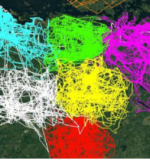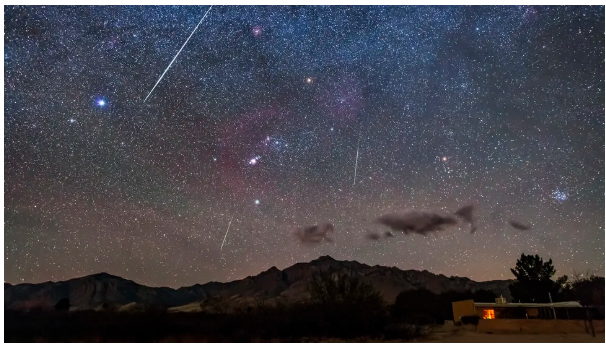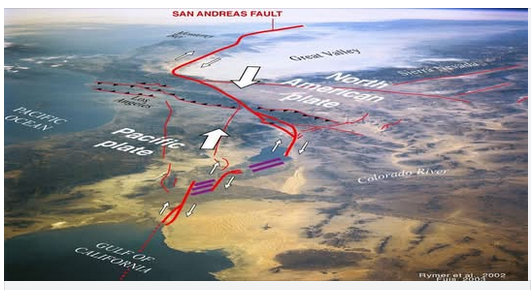This image of GPS tracking of multiple wolves in six different packs is an excellent illustration of how much wolf packs in general avoid each other’s range.

The pictures, created in the framework of Voyageurs Wolf Project conducted in Voyageurs National Park, Minnesota, USA, show typical adjacent wolf pack territories that are somewhere around 50-70 square miles (but that can vary from year to year).
That’s about the size of the areas marked with the different colors. The white line marks the boundary of the national park.
As beautifully demonstrated by the animation, wolf packs generally avoid being around each other unless they are fighting for food that may be in short supply. Bit like humans do with their countries.
When that situation occurs, wolves may engage in battles with other packs in order to continue have their claim on a given location as well as the food found within it.
But, more often than not, it’s due to human activity that wolves have to shift their territory. You see, when people take out part of their natural habitat, wolves may have to find a new route to get to their food sources.
Naturally, this can create conflicts among various wolf packs due to the overstepping of pack bounds.
Sources: Voyageurs Wolf Project, Wolfworlds








 Photographer Finds Locations Of 1960s Postcards To See How They Look Today, And The Difference Is Unbelievable
Photographer Finds Locations Of 1960s Postcards To See How They Look Today, And The Difference Is Unbelievable  Hij zet 3 IKEA kastjes tegen elkaar aan en maakt dit voor zijn vrouw…Wat een gaaf resultaat!!
Hij zet 3 IKEA kastjes tegen elkaar aan en maakt dit voor zijn vrouw…Wat een gaaf resultaat!!  Scientists Discover 512-Year-Old Shark, Which Would Be The Oldest Living Vertebrate On The Planet
Scientists Discover 512-Year-Old Shark, Which Would Be The Oldest Living Vertebrate On The Planet  Hus til salg er kun 22 kvadratmeter – men vent til du ser det indvendigt
Hus til salg er kun 22 kvadratmeter – men vent til du ser det indvendigt  Superknepet – så blir snuskiga ugnsformen som ny igen!
Superknepet – så blir snuskiga ugnsformen som ny igen!  Meteorite That Recently Fell in Somalia Turns Out to Contain Two Minerals Never Before Seen on Earth
Meteorite That Recently Fell in Somalia Turns Out to Contain Two Minerals Never Before Seen on Earth  Nearly Frozen Waves Captured On Camera By Nantucket Photographer
Nearly Frozen Waves Captured On Camera By Nantucket Photographer  It’s Official: Astronomers Have Discovered another Earth
It’s Official: Astronomers Have Discovered another Earth 